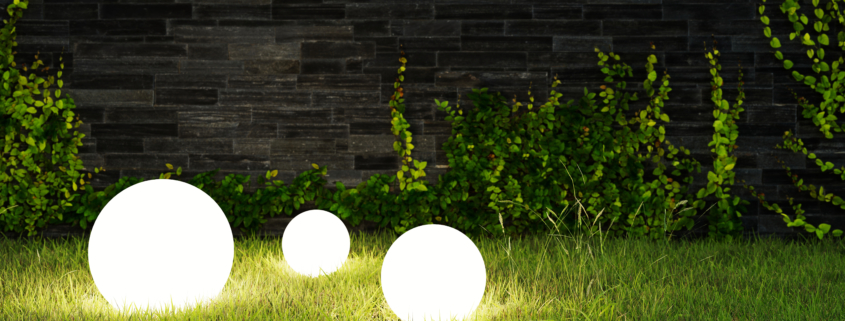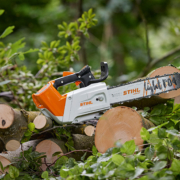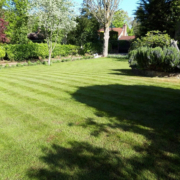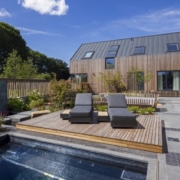Experts Answer Your Most Searched Outdoor Lighting Questions
With summer in full swing and the weather recording above-normal temperatures worldwide, many people will likely take full advantage of their gardens.
But while there’s plenty of sunlight to go around during the day, how can you ensure your garden is lit well in the evenings? Well, rather than unnecessarily adding to your electricity bill, investing in LED lights will prove much more cost-effective, energy-efficient and plant-life friendly.

Experts Answer Your Most Searched Outdoor Lighting Questions
Lighting Expert Michael Meiser of Lumilum has teamed up with gardening experts at The Greenhouse People to answer your most searched garden lighting questions…
Do LED lights attract bugs? – 2900 searches per month
While all lights are somewhat attractive to bugs, the lack of UV light LEDs produce makes them less attractive than incandescent lights.
Many bugs, such as flies and spiders, use UV light to navigate. Colours with shorter wavelengths are more visible than longer wavelengths and will attract them.
Some LEDs still produce shorter wavelengths that are a cool-white/blue colour (3600K and above), so choose a fixture that emits wavelengths above 550 nanometers that’s a warm white/yellow (below 3600K).
LEDs also produce less heat than incandescent lights, as only 20-50 percent of their energy generates heat, compared to 90 percent for incandescent, making them less attractive to bugs.
The Greenhouse People say: “Dining al fresco in the long summer evenings is often a highlight of the warmer season, but inevitably bugs can intrude on your fun.
“And this year, in particular, soaring temperatures have created the ideal breeding conditions for swarms of wasps and other insects.
“But it’s important to remember that many of the bugs we consider pests are actually valuable predators and pollinators for your garden, so always best to avoid killing them and use preventative measures to keep bugs away.
“Switching to LED lights, using citronella candles and spraying peppermint essential oil are all harm-free ways to keep insects at bay when enjoying your evenings outdoors.”
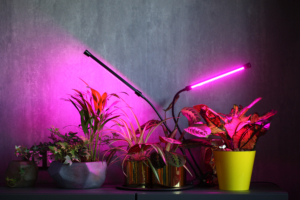
Can LED lights grow plants?
Can LED lights grow plants? – 1000 searches per month
Yes, if they deliver enough PAR (Photosynthetic Active Radiation) light to plants – meaning the light is high in quality and intensity.
Photosynthetic Photon Flux Density (PPFD) measures how much PAR reaches your plants. Regular LEDs have low PPFD, so they will not be sufficient for plants with high light requirements, but seedlings and young plants require 300µmol/m2/s at most.
Incandescent bulbs must be at least 24 inches above plants since they run so hot and fluorescent bulbs 12 inches, while LEDs can safely be six inches away.
Red light helps plants grow flowers, while blue light helps them grow foliage. Since humans perceive the green part of the colour spectrum as brighter, a good, horticultural light may look relatively dim.
The Greenhouse People say: “Harnessing the power of LED grow lights can be a great way to give seedlings and other young plants a boost, granting gardeners brighter blooms all year round.
“They’re also ideal to use in greenhouses to help promote the growth of flowers, vegetables and fruits to produce a higher quality crop with greater yield, even during the winter months.
“Just be sure to use the correct LED lighting for your plants as some may need more light, while others may react to any heat emitted.
“Also, be sure to give your plants a rest from constant light – plants need a period of darkness to grow effectively, so be sure to set a timer for your grow lights to prevent stunted growth.”
Do LEDs use less electricity? – 480 searches per month
LED lights use up to 90 percent less energy than incandescent and 80 percent less energy than halogen bulbs.
They also last far longer than incandescents, which have a typical lifespan of 1,200 hours compared to 25,000 for LEDs. Halogens aren’t much better than incandescents at 2,000 hours.
Their energy efficiency is such that an LED bulb using five watts of power does the same job as a filament bulb using 40 watts.
They produce significantly fewer heat emissions and require less power to emit the same amount of light, making them more cost-effective, safer, and environmentally friendly solutions for your garden.

Are LEDs waterproof?
Are LEDs waterproof? – 260 searches per month
Like all lights, it depends on the manufacturer and product. LEDs specially designed for outdoor use should be waterproof, but make sure you check the IP rating.
Ingress Protection (IP) rating measures the protection an item will have against solids (dust, sand) and liquids. It consists of two numbers, with the first (0-6) referring to protection from solids and the second (0-8) protection from liquids.
Standard garden lights require IP44, protecting them from splashing water and solids more than 1mm, such as wires. Deck and patio lights, which are often walked on and washed, require IP65 for protection from water jets, dust and harmful deposits.
If you’re lighting ponds or swimming pools, you will need lights with an IP68 rating to protect them from submersion in water beyond 1m.
For the latest industry news visit landscapingmatters.co.uk/news
Get all of the big headlines, pictures, opinions and videos on stories that matter to you.
Follow us on Twitter and Instagram for fun, fresh and engaging content.
You can also find us on Facebook for more of your must-see news, features, videos and pictures from Landscaping Matters.


